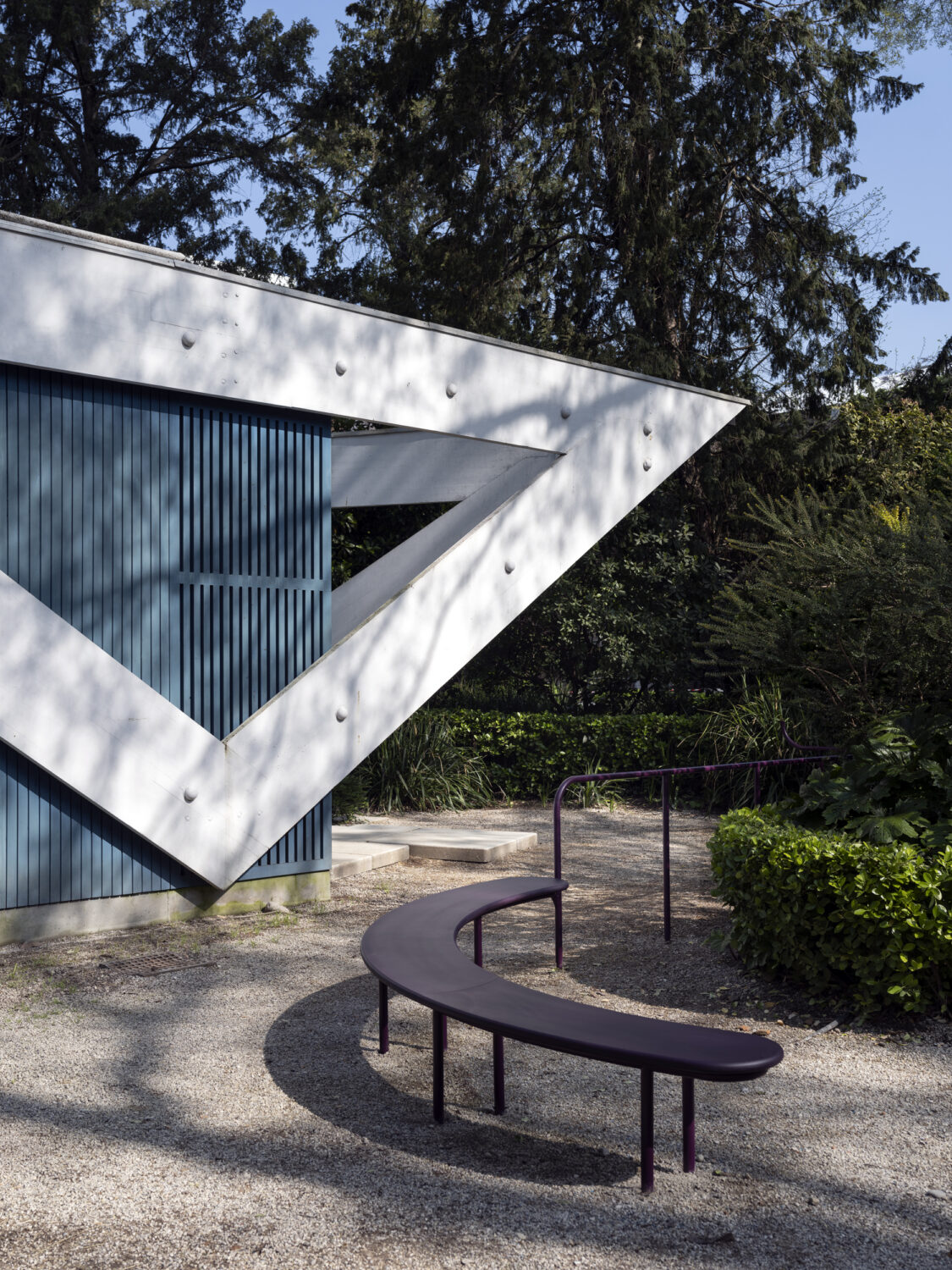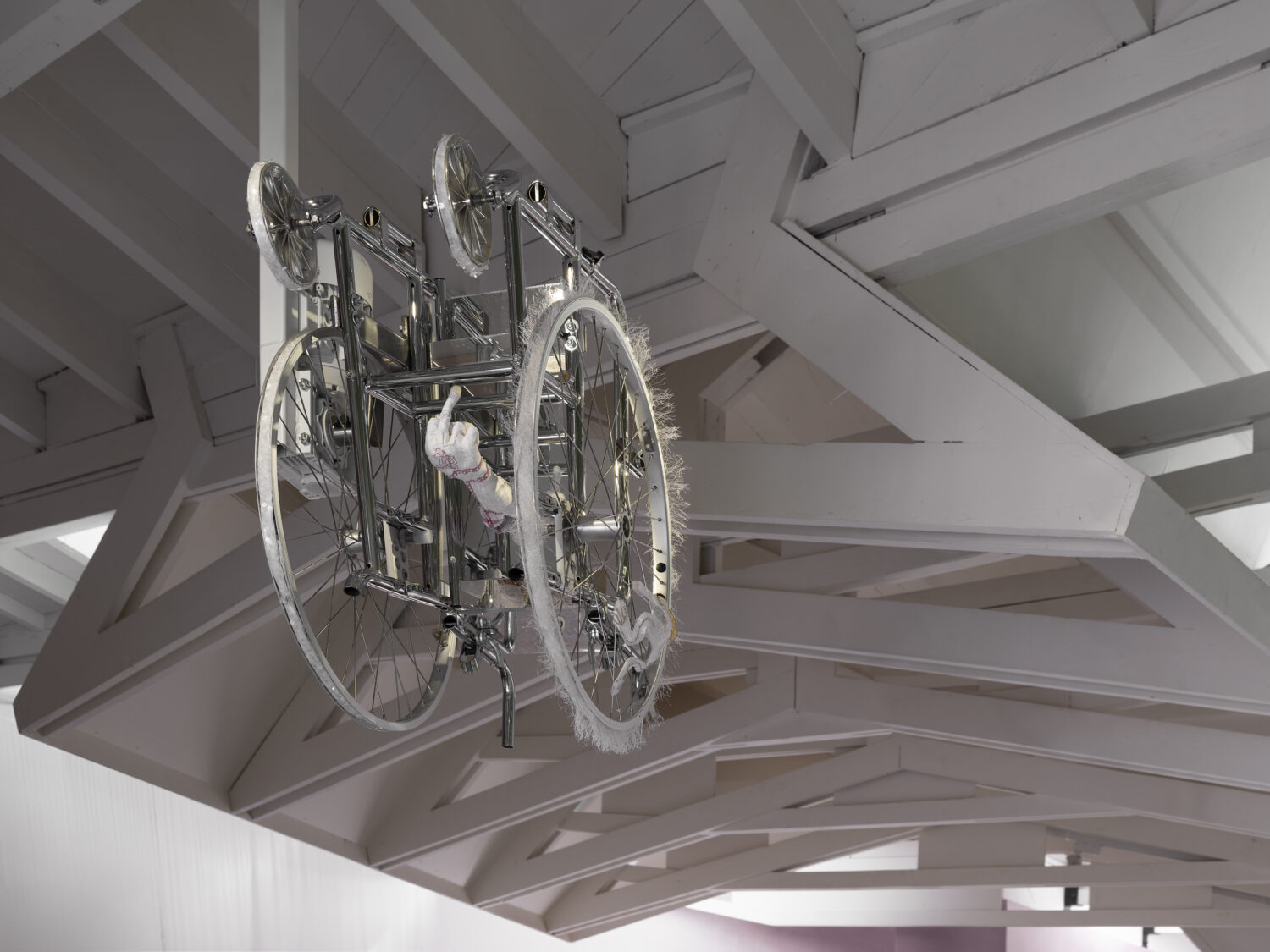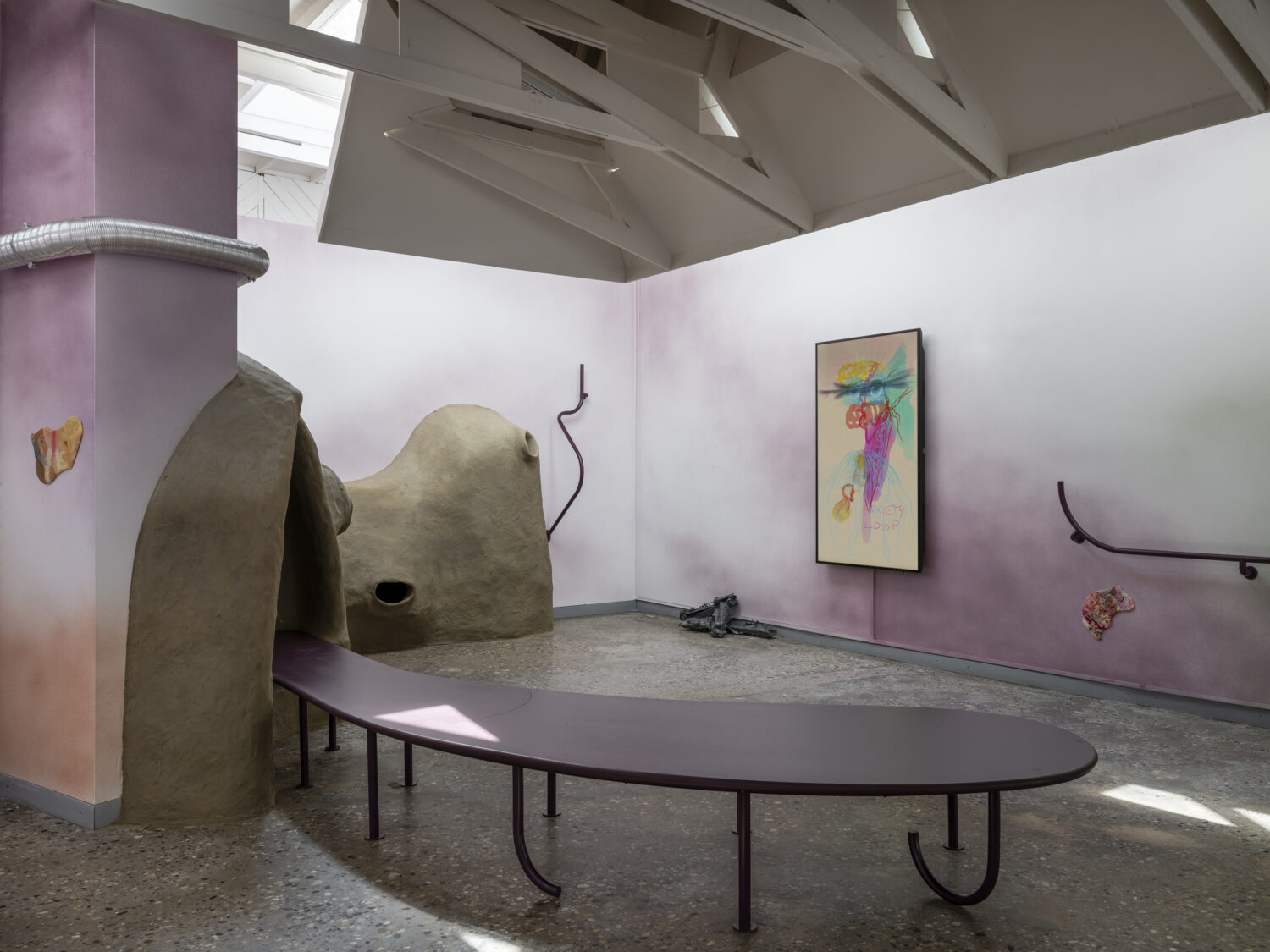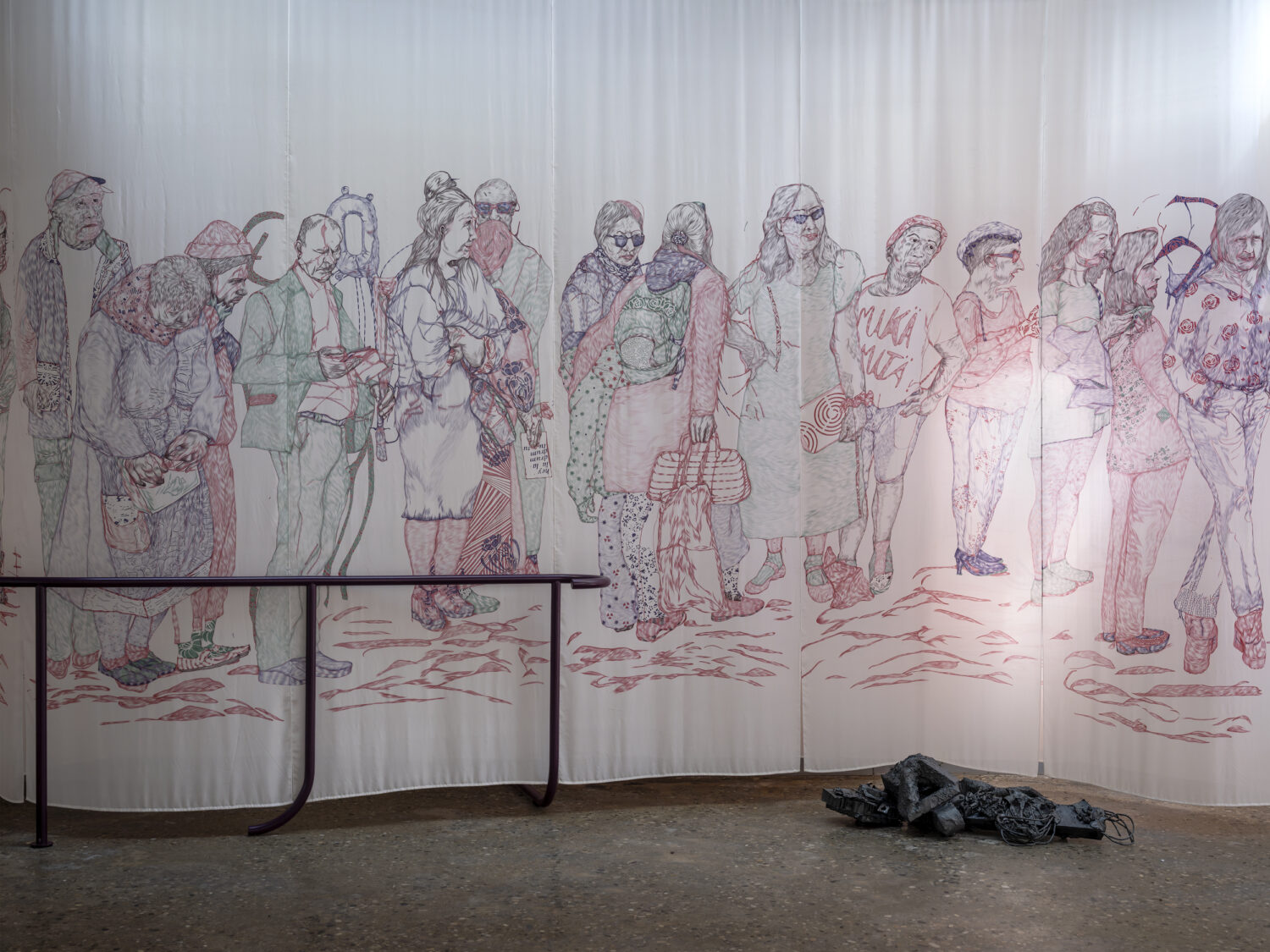Behind the Biennale: Yvonne Billimore and Jussi Koitela Want Everyone to Feel Pleasure
By Yvonne Billimore and Jussi KoitelaOn the occasion of the 60th Venice Biennale — open now and running until 24 November 2024 — Something Curated continues its series, Behind the Biennale. Comprising a collection of essays from the curators of select national pavilions, the series offers first-hand perspectives on some of this year’s most exciting presentations.
Following the curators of the National Pavilion of Saudi Arabia’s essay, artist-curator Yvonne Billimore, and Head of Programme at Frame, Jussi Koitela, share with SC their experience curating the Pavilion of Finland.

We started working and curating together a little over five years ago, when we began Rehearsing Hospitalities: Frame Contemporary Art Finland’s public programme for 2019 to 2023. With Rehearsing Hospitalities, we wanted to (re)consider how institutions work with artists and other collaborators. How can power be shared, or even re-distributed? How can we work collaboratively in more hospitable and reciprocal ways?
One of the ongoing challenges was addressing how curatorial and institutional practices might better meet the practices, needs and values of different artists, with differing experiences of the world. How can institutions, and those of us inhabiting them, learn and unlearn in collaboration with artists and their work, particularly in ways that are sensitive to, and not extractive of, situated and embodied knowledges?
Since these questions were something that we investigated and attempted to work through already in that programme, taking mainly discursive and performative forms, we wanted to explore what these ways of working could mean in an exhibitionary and spatial context such as the Pavilion of Finland at the Venice Biennale. The project emerged in response to this desire to do things differently: to explore ways of being, knowing, living, inhibiting, building, making and presenting otherwise.
We had previously worked with Pia Lindman, Vidha Saumya and Jenni-Juulia Wallinheimo-Heimonen respectively as part of the programme and were keen to bring them together in the Biennale context. United by their transdisciplinary practices which intertwine art, life, and activism, Lindman, Wallinheimo-Heimonen, and Saumya’s works celebrate the pleasure of the personal as a powerful means of inhabiting, imagining and remaking more plural worlds.

For example, following mercury poisoning, Lindman utilises the heightened sensitivity of her nervous system to translate micro-signals into visual images, melodies, words, and colours, incorporating them into artworks that enable her to explore the nuances of different environments and social situations.
Meanwhile, Saumya challenges the norms of aesthetics, gender, academia and nation-state. In her work, viewers encounter an interplay of desire, intimacy, and (home)land, offset by the heteronormative demands of utility, time and (dis)placement.
Thirdly, Wallinheimo-Heimonen’s artwork points to the hate speech people with disabilities are subjected to — particularly from within the medical and social care industries — creating intricately fabricated realities in which a diversity of human bodies have won the right to choose a pleasurable life over mere existence.
Embraced as a collective project, The pleasures we choose has been shaped by exchanging both shared and individual experiences of art and life. This shared process has influenced the artworks and generated the building blocks for the architectural elements that accommodate access and bodily needs across registers. Exploring ways of becoming collective through presenting works and bodies in relation (rather than isolation), the project extends this invite to the audience: the pavilion is not only a site for the presentation of artworks but an exhibition of intersecting needs for emancipatory spatial and social conditions.

Presenting their works and lived experiences in correlation with one another, the artists position artmaking, conceived through embodied knowledge, as a mechanism to survive a world that renders the existence of some bodies more use-full than others. By choosing to inhabit the world otherwise — spending their time and labour stitching, drawing, sculpting and breathing their experiences to material forms — they resist the normative utilitarian demands placed on their bodies, and insist that all bodies should be afforded the right to choose pleasure.
The artists’ works are connected conceptually and materially through architectural interventions — collaboratively shaped by the artists and curators, and designed by architectural designer Kaisa Sööt — that reimagine the Pavilion, as well as the kinds of art, bodies, and experiences that the space can support.
A historical canon of exhibitions, developed predominantly by Western institutions and cultural frameworks actively embroiled in colonial and extractive practises, still largely determines the ways of seeing, categorising, and presenting artworks, artefacts, and other forms of cultural expressions. The conditions for presenting and mediating art thus carry and extend the intersectional burdens of classism, racism, colonialism, and ableism that force artworks and bodies into certain formations and displays.
We argue that these conditions separate artists’ bodies, lives, and labour from artworks and deter audiences from engaging in more embodied ways. With The pleasures we choose, we emphatically interrogate: whether and, if so, how, as curators collaborating with artists in the framework of prestigious institutional commissions, can we make visible, interrupt and, transform the inherited bias of epistemological and cultural power structures?

In Tony Bennett’s seminal text “The Exhibitionary Complex,” he states that the art institutions are “involved in the transfer of objects and bodies from the enclosed and private domains in which they had previously been displayed (but to a restricted public) into progressively more open and public arenas where, through the representations to which they were subjected, they formed vehicles for inscribing and broadcasting the messages of power (but of a different type) throughout society.”[1]
Bennet’s notion of art institutions and exhibitions as “vehicles” of power in the moment when something is displayed publicly allows us to recognise and (re)consider which objects, narratives, bodyminds, and ways of being and relating are consistently excluded.[2] Deeply ingrained in these considerations, or lack thereof, are Western-centric histories of art and culture, their gazes and canons.
Mindful of these issues and wanting to encourage embodied and multi-sensorial experiences, The pleasures we choose introduces forms of “access architecture” to support different social, physical, and microbial architectures present within the pavilion. Leaning on artist Céline Conderelli’s acclaimed work on “support structures” that attend to who and what gives support, the “access architecture” part of the exhibition seeks to intensify and multiply the sensory and physical relays possible between artworks and audiences.
The exhibition ultimatelyrefuses the exceptionalism of art and the myth that the artist is separate from the world, emphasising on the contrary that it is precisely the experiences which draw attention to co-existence — getting in line, taking to the streets, breathing the same toxic air — that drive us towards drawing new collective futurities into existence. In this iteration of the Venice Biennale, the Pavilion of Finland is dedicated to those who, through their embodied experiences of the world, cannot afford to differentiate life and art, even if they might never have the opportunity to pass through these walls.
[1] Tony Bennett, “The Exhibitionary Complex,” new formations 4 (Spring 1988): p74
[2] The term “bodymind” challenges the divisions generally made between body and mind in Western thought. It is a term often used in disability studies to emphasise that the body and mind are inseparable and interdependent.
Feature image: Exhibition view of The pleasures we choose, Pavilion of Finland at the 60th International Art Exhibition – La Biennale di Venezia, 2024. Photo: Ugo Carmeni / Frame Contemporary Art Finland